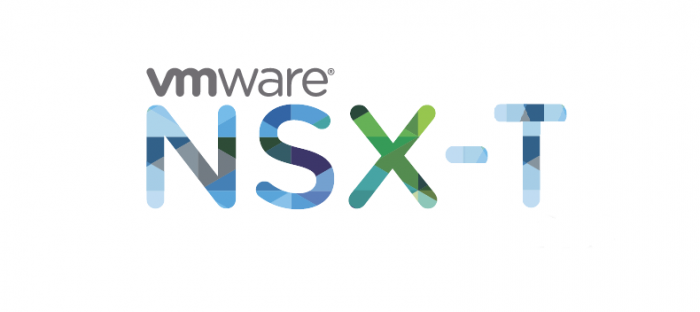In today’s rapidly evolving digital landscape, networking plays a crucial role in enabling businesses to scale, optimize resources, and enhance security. Traditional networking approaches often face limitations in terms of flexibility, scalability, and adaptability to modern infrastructures. However, with the advent of software-defined networking (SDN), a new era of networking has emerged, offering transformative solutions to these challenges. One prominent player in the SDN market is VMWare NSX-T, a comprehensive and feature-rich networking and security platform. In this post, we will explore what VMWare NSX-T is and delve into the benefits of software-defined networking.
What is VMWare NSX-T?
VMWare NSX-T is an advanced software-defined networking solution designed to provide agile, efficient, and secure network virtualization for modern data centers, hybrid clouds, and multi-cloud environments. It is part of the NSX family of products offered by VMWare and represents the next-generation iteration of their SDN platform.
The core principle of VMWare NSX-T is decoupling network services from the underlying hardware, allowing network administrators to manage and provision networking resources entirely through software. This abstraction enables organizations to achieve a more flexible, scalable, and dynamic networking infrastructure, ultimately leading to better business outcomes.
Key Features of VMWare NSX-T:
- Network Virtualization: NSX-T creates logical networks that are decoupled from the physical network infrastructure, allowing for seamless migration, automated provisioning, and simplified management of network services.
- Multi-Hypervisor Support: Unlike some SDN solutions, NSX-T is designed to work across multiple hypervisors, including VMWare vSphere, KVM, and Microsoft Hyper-V. This enables organizations to avoid vendor lock-in and maintain a heterogeneous virtualization environment.
- Multi-Cloud Networking: VMWare NSX-T is built to extend its capabilities to multi-cloud environments, allowing businesses to maintain consistent network and security policies across private and public clouds, thereby facilitating workload portability and hybrid cloud deployments.
- Micro-Segmentation: NSX-T provides micro-segmentation capabilities, allowing granular control over network traffic between virtual machines and containers. This enhanced security prevents lateral movement within the network and helps protect against data breaches and cyberattacks.
- Load Balancing and VPN Support: NSX-T includes load balancing and VPN functionality, facilitating traffic distribution and secure communication between different networks and locations.
- Integration with Orchestration and Automation: NSX-T integrates with various cloud management platforms and automation tools, enabling organizations to automate network provisioning, deployment, and scaling.
Benefits of Software-Defined Networking (SDN):
- Enhanced Flexibility and Agility:
Software-defined networking introduces a new level of flexibility to network operations. By abstracting network services from physical hardware, SDN enables rapid provisioning and dynamic reconfiguration of network resources. This agility is especially critical in modern IT environments, where workloads can change rapidly, and businesses need to respond quickly to market demands.
- Improved Scalability:
Traditional networking setups often require manual adjustments to handle increased workloads, which can be time-consuming and error-prone. SDN, on the other hand, allows for easier scalability through automation. Organizations can scale their network infrastructure up or down based on demand, making it more efficient and cost-effective.
- Centralized Management and Control:
With SDN, network administrators can manage the entire network infrastructure from a centralized controller. This centralized management approach simplifies network monitoring, troubleshooting, and policy enforcement. Changes to network configurations can be implemented across the entire network with just a few clicks, reducing the risk of human errors and ensuring consistency.
- Cost Savings:
The flexibility and automation provided by SDN lead to cost savings in various ways. By virtualizing network functions, organizations can reduce the need for expensive proprietary hardware. Automation also reduces the time and effort required to manage and maintain the network, allowing IT teams to focus on more strategic initiatives.
- Increased Security:
Micro-segmentation, a key feature of SDN, allows for the isolation of workloads and applications, enhancing security by preventing unauthorized access and limiting the lateral movement of threats within the network. Security policies can be dynamically applied and adjusted as needed, responding to evolving threats in real-time.
- Network Efficiency and Optimization:
SDN enables organizations to optimize network traffic by intelligently routing data and applications through the most efficient paths. This optimization not only improves performance but also minimizes latency, leading to a better end-user experience.
Conclusion
VMWare NSX-T represents a powerful and comprehensive software-defined networking solution that addresses the challenges of modern data centers, hybrid clouds, and multi-cloud environments. By embracing the principles of SDN, organizations can unlock the full potential of their network infrastructure, achieving greater agility, scalability, security, and cost savings. As the digital landscape continues to evolve, SDN will undoubtedly play a crucial role in shaping the future of networking, and VMWare NSX-T stands as a testament to the transformative benefits that software-defined networking offers.
